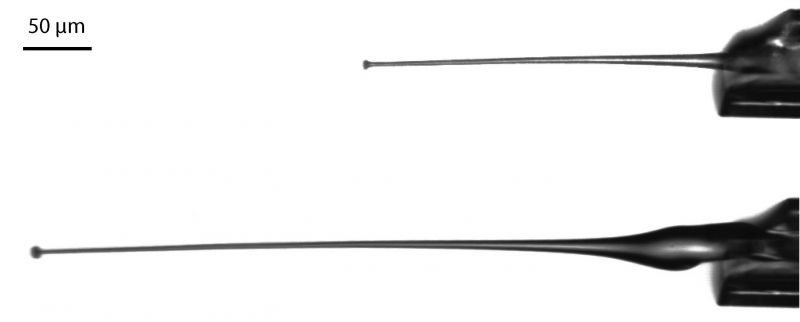Microjet generation and applications
Transient liquid jets produced by flow focusing have been studied from various perspectives due to fundamental interest and their widespread occurrence. Common instances include bubbles bursting at a liquid surface, jets generated by the impulsive acceleration of a liquid surface, and shaped charges. In our group, we study a new method of generating such a jet. We use a microtube in which the impulsive acceleration of the interface is due to the abrupt vaporization of a small mass of liquid caused by the absorption of a laser pulse (FIG1). With high-speed imaging, we experimentally study the physics behind this jet generation and investigate the parameters that influence the velocity and shape of this jet (REFERENCE). Furthermore, we are actively researching the possibilities of a particularly attractive potential application of the present supersonic microjets: needle-free drug injection. Investigation of the penetration dynamics into human skin, as well as other relevant issues will lead to the understanding of how this technology can be applied for this purpose.

Figure 1: Images of a supersonic microjet generated in a 50 micron capillary tube. The capillary is visible on the right side; the jet tip is shown on the left. The jet travels from right to left with a speed of 490 m/s. Time between images is 500 ns.
Movie of a microjet generated in a 500 micron capillary tube impacting on artificially grown human skin that is placed on a cuvette filled with gelatin. The jet travels with a speed of 160 m/s and penetrates into the skin and gelatin to a depth of around 1.3 mm.
Publications
| Highly Focused Supersonic Microjets[arΧiv] Y. Tagawa, N. Oudalov, C.W. Visser, I.R. Peters, D. van der Meer, C. Sun, A. Prosperetti, and D. Lohse Phys. Rev. X 2, 031002 (2012)BibTeΧ |
